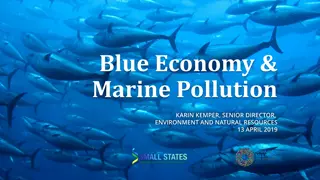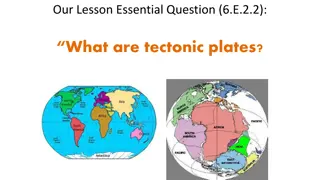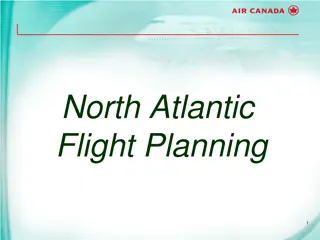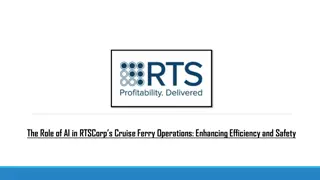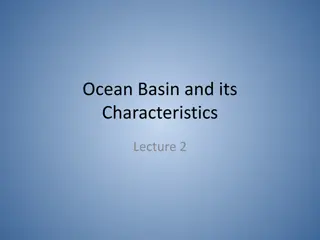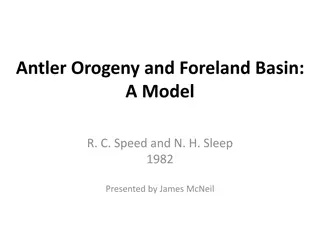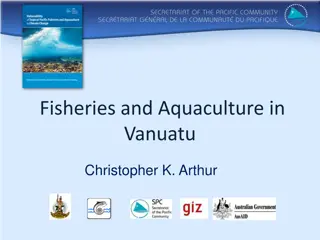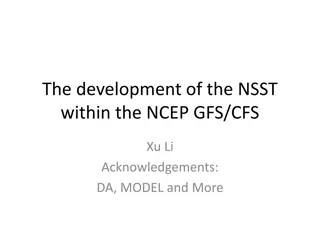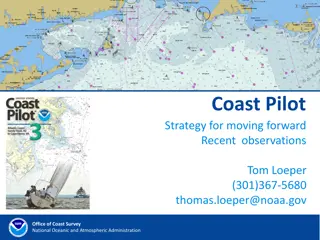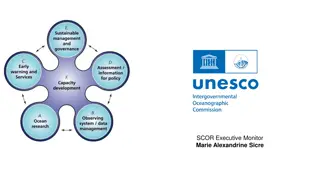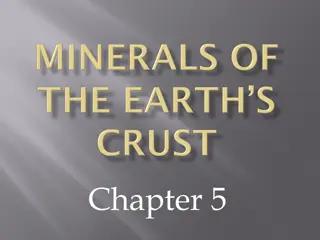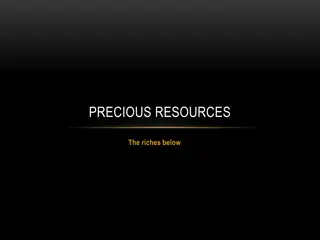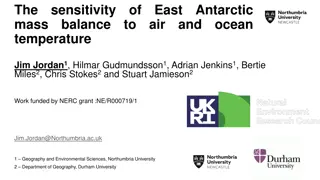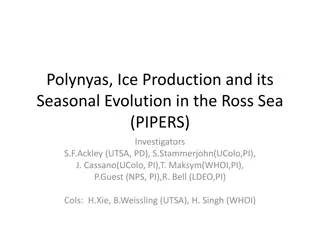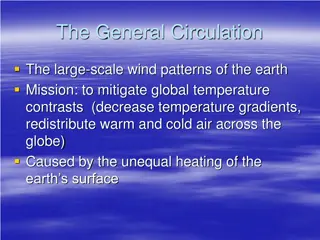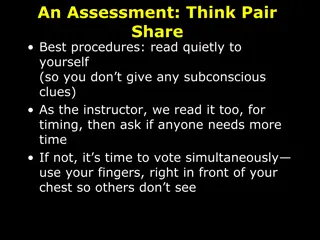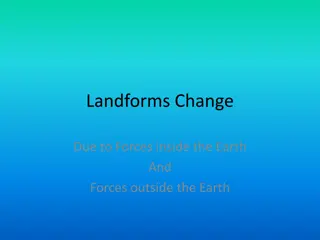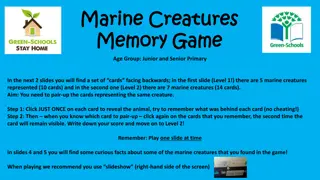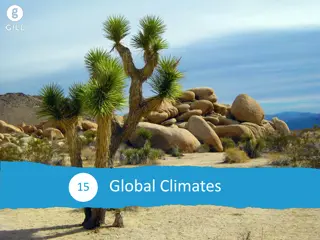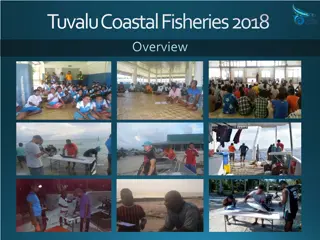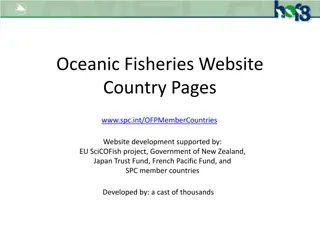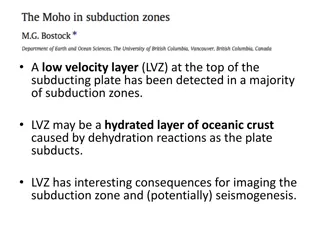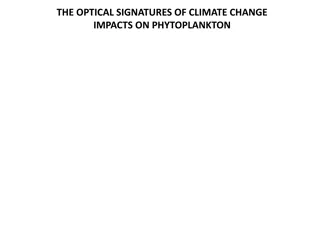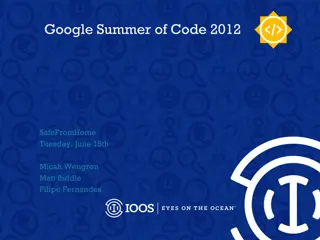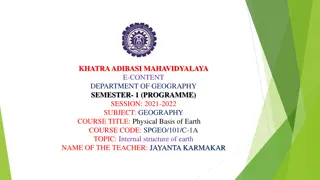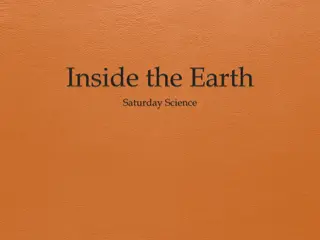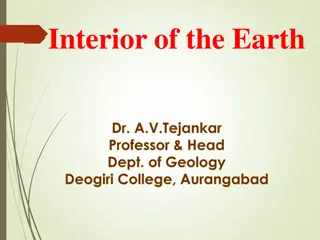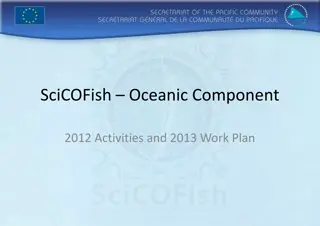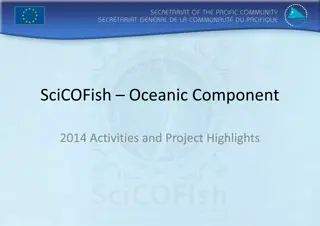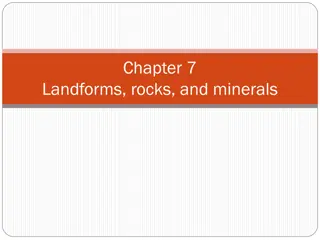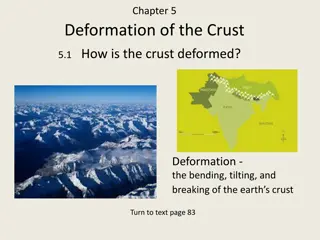An overview of solar influence on climate
The relationship between solar variability and Earth's climate is complex, with factors like the Sun's energy output, 11-year solar cycle, and regional differences playing a role. This overview delves into how solar influences interact with atmospheric and oceanic processes, such as the Sun's impact
6 views • 37 slides
Tokyo Global Scholarship Programs at Tokyo Metropolitan University
Explore the Tokyo Global Partnership Scholarship Program offering opportunities to earn a graduate degree from Tokyo Metropolitan University with benefits like international airfare, tuition coverage, and a monthly stipend. Hear from a 2021 recipient, Manolo Benitez, who shares his enriching experie
1 views • 4 slides
Yacht Rental Bahamas Nassau : Experience the Best of the Bahamas
Yacht Charter Bahamas Nassau offers exclusive cruising experiences within the turquoise waters of the Coast of the Bahamas! During your journey through this oceanic city keep in mind its historical background coupled with cultural traditions that hav
0 views • 6 slides
Yacht Rental Bahamas Nassau : Experience the Best of the Bahamas
Yacht Rental Bahamas Nassau offers exclusive cruising experiences within the turquoise waters of the Coast of the Bahamas! During your journey through this oceanic city keep in mind its historical background coupled with cultural traditions that have
9 views • 6 slides
Understanding Faults in the Earth's Crust
Stresses in the earth's crust can lead to the formation of faults, where rocks are displaced due to relative movement. Faults can vary in size and shape, with different types such as normal faults. Movement along fault planes can be either translational or rotational. This classification helps in un
1 views • 12 slides
The Blue Economy and Marine Pollution: A Comprehensive Overview
The presentation outlines the thriving ocean economy, the concept of the Blue Economy, the World Bank's approach, risks faced by oceans, and the impact of marine pollution on Small Island Developing States and coastal regions. It emphasizes sustainable development of oceanic activities, collaboratio
1 views • 12 slides
Understanding Tectonic Plates and Earth's Layers
Explore the composition of Earth's layers through classifying them based on chemical and physical properties. Learn about the lithosphere and its role, including the movement of tectonic plates on the asthenosphere. Discover the distinctions between oceanic and continental plates, their thickness va
1 views • 22 slides
Challenges and Solutions in North Atlantic Flight Planning
Highlighting the complexities faced by airlines in North Atlantic flight planning, this presentation discusses the traditional methods, current problems, and objectives for more efficient operations. It addresses the impact of NAT traffic on domestic flows, the need for collaboration between domesti
0 views • 27 slides
The Role of AI in RTSCorp’s Cruise Ferry Operations Enhancing Efficiency and Safety (1)
In the fast-evolving oceanic industry, mechanization is getting to be a significant constrain driving operational productivity and security . RTSCorp, a leader in cruise ferry operations, is at the forefront of this transformation, leveraging cutting
0 views • 7 slides
Understanding Ocean Basins and Their Characteristics
Ocean basins are vast submarine regions that cover a significant portion of the Earth's surface, hosting the majority of the planet's water. These basins exhibit various features such as ocean ridges, deep-sea trenches, and seismic ridges. The ocean floor is constantly evolving due to plate tectonic
0 views • 18 slides
Antler Orogeny and Foreland Basin Model Overview
The Antler Orogeny, a Late Devonian to mid-Early Mississippian event, impacted the passive margin of the North American continent, particularly in Nevada and Idaho. The orogeny involved displacement of oceanic strata, subsidence of a foreland basin, and maintenance of highlands in the interior regio
1 views • 14 slides
Gravity Waves as a Mechanism of Coupling Oceanic and Atmospheric Acoustic Waveguides to Seismic Sources
Direct excitation of acoustic normal modes in horizontally stratified oceanic waveguides is negligible for shallow earthquakes due to velocity disparities. This study evaluates the contribution of scattering by hydrodynamic waves in generating abyssal T-waves. The research explores the role of scatt
1 views • 6 slides
Plate Tectonics: Evolution of the Earth
Explore the dynamic process of plate tectonics shaping the Earth's crust through the movement of tectonic plates, subduction zones, divergent and convergent boundaries. Discover how seafloor spreading creates new oceanic crust, and learn about the geological features formed by these processes.
0 views • 25 slides
Fisheries and Aquaculture in Vanuatu: Sustainable Development and Management
Vanuatu aims to ensure sustainable exploitation of fisheries resources, maximize economic and social benefits, contribute to food security, and meet regional responsibilities through its fisheries sector. The country's Exclusive Economic Zone (EEZ) covers 668,220 km2, with key features including a r
0 views • 17 slides
Understanding Near-Surface Sea Temperature Development in NCEP GFS/CFS
This informative piece delves into the evolution of Near-Surface Sea Temperature (NSST) within the NCEP GFS/CFS, discussing its significance in Numerical Weather Prediction (NWP) systems, the utilization of sea surface temperature (SST), and the T-profile near the sea surface. It covers the role of
0 views • 28 slides
Coast Pilot Strategy for Enhanced Navigation Services
Recent observations and directives from Tom Loeper at the Office of Coast Survey, National Oceanic and Atmospheric Administration, highlight the need for developing new services to complement digital charts and electronic navigation. The focus is on providing navigation regulations, safety-related r
0 views • 14 slides
Understanding the Goldschmidt System in Geology
Explore the Goldschmidt System in geology, which classifies chemical elements based on their preferred host phases. Learn about lithophile elements concentrated in the Earth's crust and the elemental composition of the crust. Discover the significance of chondrites in meteorites and the foundational
0 views • 11 slides
Collaborative Research Programmes in Ocean Science
Collaboration between the International Oceanographic Commission (IOC) and the Scientific Committee on Oceanic Research (SCOR) has led to successful research initiatives focusing on topics like Harmful Algal Blooms, Global Trends of Phytoplankton, Multiple Ocean Stressors, Microplastics, and more. O
0 views • 7 slides
Understanding Minerals and Rocks in Earth's Crust
Explore the fascinating world of minerals and rocks in Earth's crust in Chapter 5. Learn about the characteristics of minerals, the most common rock-forming minerals, and how they shape our planet. Discover the distinction between silicate and nonsilicate minerals and their abundance in the crust. G
0 views • 47 slides
Unveiling Earth's Riches: Resources, Minerals, and Sustainability
Australia is known for its abundant natural resources, including coal, gas, minerals, and metals. However, the country faces challenges with water scarcity. The Earth's crust holds valuable resources essential for everyday items and fuels. Understanding the importance of using resources wisely for a
0 views • 16 slides
Future Changes in East Antarctic Ice Sheet: A Climate Perspective
The East Antarctic Ice Sheet (EAIS) holds significant potential for future sea-level rise, with ongoing mass loss attributed to various factors like ice dynamics and oceanic influences. Predictions for the next 100 years suggest a scenario of rising global and ocean temperatures, impacting basal mel
0 views • 16 slides
PIPERS Research Project in Ross Sea
PIPERS is a research project focusing on polynyas, ice production, and the seasonal evolution in the Ross Sea. The project involves multiple investigators and coordinated programs to improve estimates of sea ice production, water mass transformation, and air-ice-ocean interactions in the region. Goa
0 views • 6 slides
Understanding the General Circulation of Earth's Atmosphere
The general circulation of the Earth's atmosphere plays a crucial role in mitigating global temperature contrasts by redistributing warm and cold air. This system includes the Polar Cell at high latitudes, the Hadley Cell in the tropics, trade winds, oceanic heat distribution through Eckman Transpor
0 views • 13 slides
Understanding Plate Tectonics and Earth's Crust
Explore the differences between oceanic and continental crust, the distinctions of lithosphere and asthenosphere, the dynamics of convergent and divergent boundaries, as well as the concepts of folding and faulting in geological formations. Delve into the characteristics of oceanic crust versus ocea
0 views • 10 slides
Plate Tectonics and Boundaries Overview
The content discusses various aspects of plate tectonics and boundaries, including the best procedures for assessments, features at convergent and divergent boundaries, the movements of ocean plates relative to islands, identifying plate boundaries on a map, and reasons for the delay in accepting pl
0 views • 7 slides
Forces Shaping Landforms: Inside and Outside the Earth
Explore how landforms change due to forces inside the Earth, like plate boundary activity forming fold mountains, and forces outside the Earth, such as the creation of oceanic trenches. Discover the formation of fold mountains like the Alps and Rockies, as well as deep oceanic trenches like the Mari
0 views • 10 slides
Dive into the Marine Creatures Memory Game and Fun Facts
Embark on an oceanic adventure with a marine creatures memory game featuring two challenging levels. Test your memory skills by matching pairs of marine animals while uncovering fascinating facts about these underwater wonders. Discover unique traits of various creatures like clownfish, dolphins, an
1 views • 5 slides
Understanding Global Climates and Ireland's Climate
Explore the concept of climate, classification of global climates, and factors influencing Ireland's cool temperate oceanic climate. Learn about different climate types such as hot, temperate, and cold climates, and how Ireland's proximity to seas and oceans affects its weather patterns. Discover th
0 views • 16 slides
Tuvalu Coastal Fisheries 2018 Overview and Current Activities
Tuvalu Coastal Fisheries Department aims to maximize social and economic returns by sustainably managing marine resources. Their priorities include supporting livelihoods through inshore fisheries and generating revenue from oceanic fisheries. The Coastal Division focuses on outer island and Funafut
0 views • 8 slides
Insights into Oceanic Fisheries Website Development
Explore the evolution of the Oceanic Fisheries Website, supported by multiple entities and gradually developed over the past two years. Delve into detailed reports, data accessibility, and plans for future enhancements in the realm of fisheries management.
0 views • 8 slides
Understanding the Low Velocity Layer (LVZ) in Subduction Zones
The presence of a Low Velocity Layer (LVZ) at the top of subducting plates in subduction zones has significant implications for imaging and potentially seismogenesis. This hydrated layer of oceanic crust, likely caused by dehydration reactions during subduction, affects seismic wave behaviors and ca
0 views • 12 slides
Optical Signatures of Climate Change Impacts on Phytoplankton
Explore the optical signatures of climate change impacts on phytoplankton through images showing differences in primary production, reflectance ratios, community changes, and trends in various oceanic regions. The data visualizations provide insights into the effects of climate change on phytoplankt
0 views • 10 slides
Google Summer of Code 2012 - Overview and Changes in 2021 Edition
Google Summer of Code (GSoC) is a global initiative involving student developers in open source software projects. The program, which began in 2005, has seen significant growth with over 16,000 students from 111 countries working with 715 open source organizations. However, in the 2021 edition, ther
0 views • 15 slides
Understanding Earth's Internal Structure: A Geographical Perspective
Deep parts of Earth's interior are studied indirectly through geophysics, including seismic waves, magnetic fields, gravity, and heat. Seismic studies reveal Earth's layers - crust, mantle, and core - each with distinct properties and compositions. The lithosphere, comprising the upper mantle and cr
0 views • 12 slides
Journey to the Earth's Layers
The Earth's structure consists of four main layers: the crust, mantle, outer core, and inner core. The crust is the thin, rocky layer we see on the surface, while the mantle is a solid layer that flows like a viscous liquid. The outer core is a hot, melted layer of iron and nickel, and the inner cor
0 views • 10 slides
Journey to the Center of the Earth: Unveiling the Layers
Delve into the depths of the Earth with Dr. A.V. Tejankar to explore the three main layers - Crust, Mantle, and Core. Discover how the Earth's composition and physical properties vary across these layers, resembling the layers of an egg. Uncover the secrets of the Earth's interior, from the thin but
0 views • 15 slides
Progress Report on SciCOFish Oceanic Component Activities 2012-2013
Logframe structure and progress indicators are presented for the SciCOFish Oceanic Component focusing on efforts to manage bigeye and yellowfin tuna fisheries sustainability. The report outlines key objectives, progress on indicators, observer training achievements, and data coverage rates. Efforts
0 views • 24 slides
SciCOFish Oceanic Component 2014 Activities and Project Highlights
The SciCOFish Oceanic Component in 2014 focused on conservation and sustainable use of coastal and oceanic fisheries resources in the PI region. The project aimed to provide scientific data and advice for effective management decision-making. Progress was made on various indicators including efforts
0 views • 19 slides
Understanding Earth's Changing Crust: Landforms, Rocks, and Minerals
The Earth's crust is in constant motion due to plate tectonics, which results in various landforms, rocks, and minerals. This movement is driven by forces such as tension, compression, and shear, causing earthquakes, mountains, and volcanic activity. Through processes like weathering and erosion, th
0 views • 26 slides
Understanding Crust Deformation: Forces, Stress, and Isostatic Adjustments
The Earth's crust undergoes various forms of deformation such as bending, tilting, and breaking due to forces like compression, tension, and shearing. Isostatic adjustments play a role in areas with mountain ranges, causing the crust to bend up and down. As mountain ranges erode, the crust lightens
0 views • 9 slides





